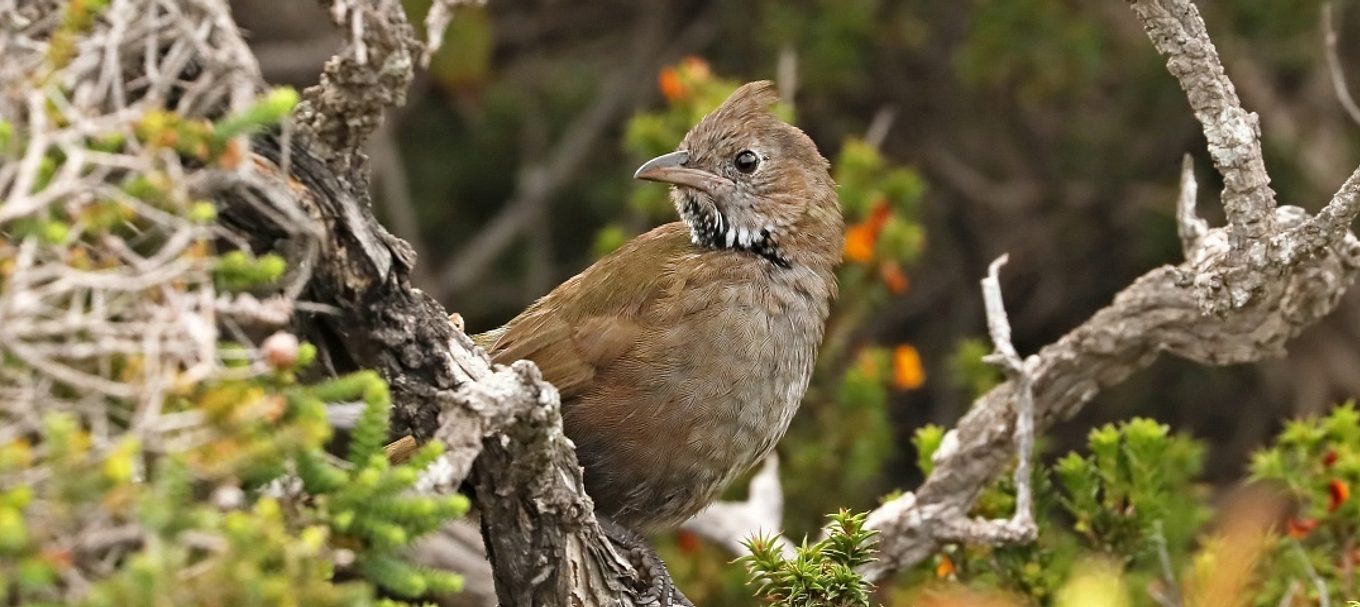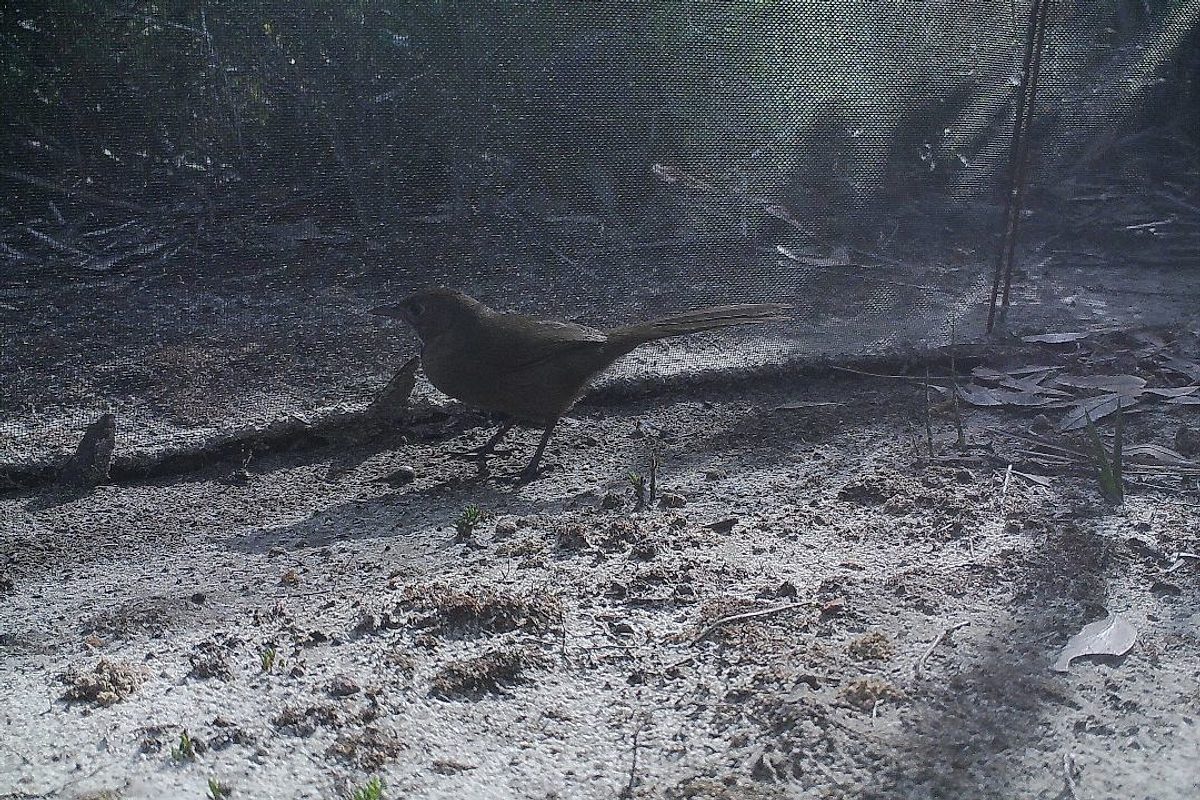
Find out how the shy and secretive Kangaroo Island western whipbird is faring post-bushfire
Like the Australian owlet-nightjar, the Kangaroo Island western whipbird and its habitat was severely impacted by the 2019-20 summer bushfires in South Australia.
About 50 per cent of its population was lost in the bushfire, but monitoring is being undertaken to understand how the species is recovering.
National Parks and Wildlife Service South Australia (NPWSSA) has been conducting bird surveys using call-playback and motion sensor-activated cameras so that rangers and ecologists can better understand native and feral animals living in, or passing through, the bushfire-affected areas of the island.
Call playback is a common method used to monitor elusive birds such as whipbirds, because they make their presence known with a distinctive song. At set locations, the bird surveyors simply play a recording of the whipbirds’ calls for 30 seconds, and then listen for a reply.
Between the call playback surveys and the motion sensor-activated cameras, the team learns about the common species that are present and captures the more elusive species like the Kangaroo Island western whipbird.

About the Kangaroo Island western whipbird
Kangaroo Island’s western whipbird is one of Australia’s rarest birds. It’s timid and lives in dense, low scrub, where they mostly feed on-ground – making them susceptible to becoming dinner for feral cats.
There are only a few SA locations where they are found, with Kangaroo Island the key location. The species is so elusive that its first record on Kangaroo Island was in 1967.
The differences between the Kangaroo Island western whipbird and SA’s mainland western whipbird are its smaller size and olive-grey feathers.
What does the monitoring reveal about the species?
Before the bushfires, these birds were spotted in dense mallee along the south side of the western end of the island.
After the bushfire, one western whipbird was sighted near the base of Remarkable Rocks in Flinders Chase National Park thanks to a small patch of bush that remained unburnt and the rocks themselves, which provided a small refuge.
How is the species faring post-bushfire?
Since the bushfires, western whipbirds have been heard or seen during surveys, as well as recorded on-camera and heard by ecologists at many of the unburnt patches on the west end of the island.
During the most recent surveys in July, 30 birds were recorded and they were present at nearly two thirds of the sites that were surveyed.
The control of feral cats on Kangaroo Island is important in the recovery of the species.
Do you want to learn more about how SA’s wildlife is recovering post-bushfires? Read about theKangaroo Island dunnart,theglossy black-cockatooand theAustralian owlet-nightjar.
(Main image courtesy of Tom Hunt)





